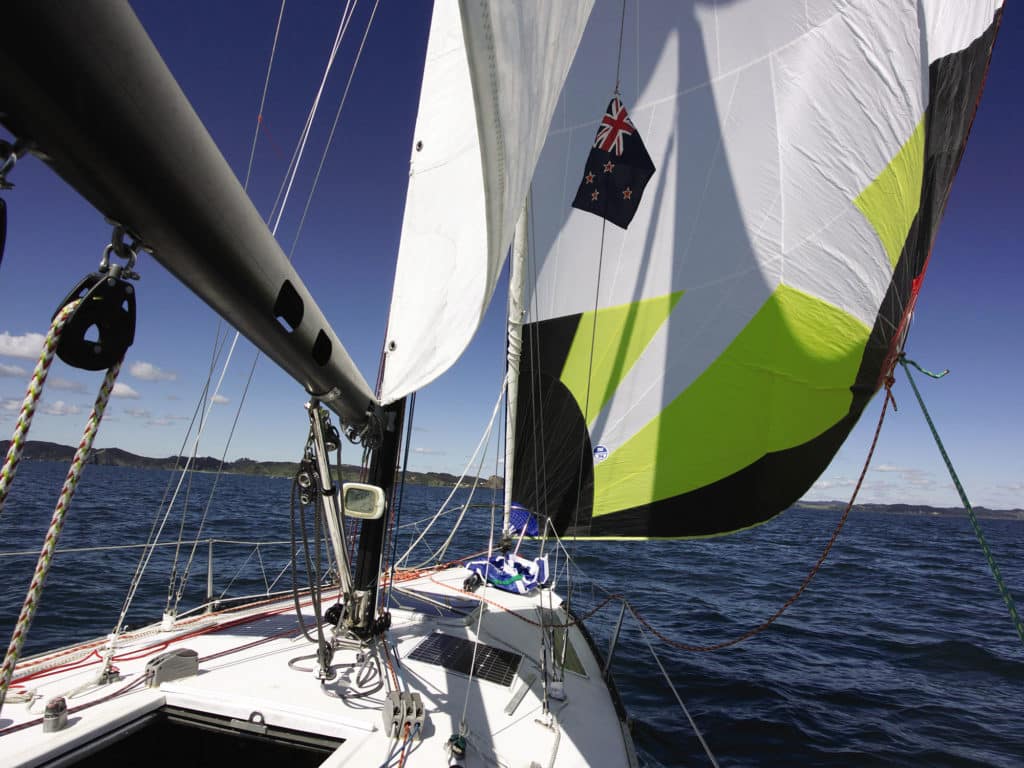
When we sailed into Opua, New Zealand, in a gale in September 2014, after crossing the Pacific Ocean solo in four months and four stops, Gannet, my ultralight Moore 24, was beginning to unravel. All the tiller pilots were dead. The port floorboard was broken and the port pipe berth unusable after the tube jumped out of its socket when Gannet became airborne off a wave and crashed into a trough. These were more important than they might seem because they left no place to brace my foot in the cabin while the little sloop was heeled 30 degrees and more to port as she generally was in the last 48 hours of that passage from Tonga. We had inadequate solar charging in overcast conditions, with two of the six panels nonfunctioning.
RELATED: Solo Sailor Webb Chiles to Finish Sixth Circumnavigation
One of the lessons learned from investigations of airline crashes is that they are often the result of a cascade of small failures, none important in itself, but collectively fatal. I did not know what might break next on Gannet, and I did not want to find out, so I pushed hard to get in port before the wind backed, increased from 40-45 knots to 50-55, and closed the door—forcing Gannet to remain at sea for several more days.
Not long after our arrival, I unraveled some myself when I fell and all but severed part of my left shoulder rotator cuff.
I do not claim to be better than ever, but, thanks to physical therapy and my own exercises, I was better than I ever expected to be six months later. I know that a torn rotator cuff does not heal, but it felt as though it had.
Gannet definitely was better than ever by the time we put to sea again. The boatyard in Opua made new iroko floorboards. I had new tiller pilots and great hopes for the mostly underdeck Pelagic pilot. In port, the pipe berth was as easy to pop back in place as at sea it was not. I replaced the failed solar panels. And I made several improvements.
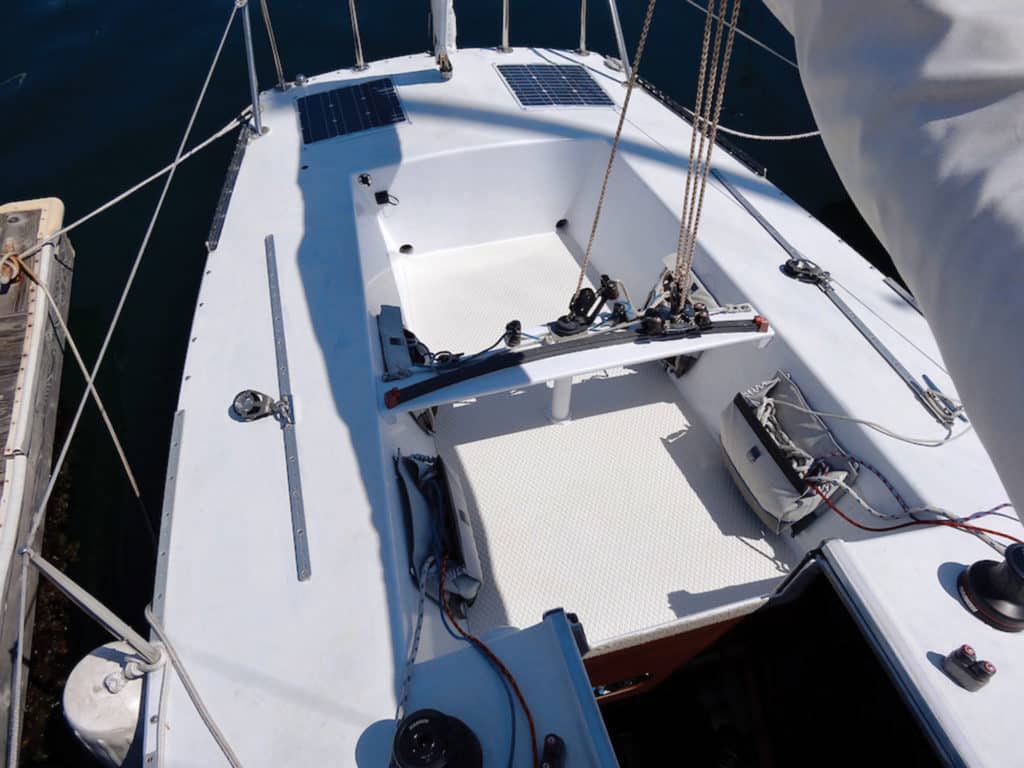
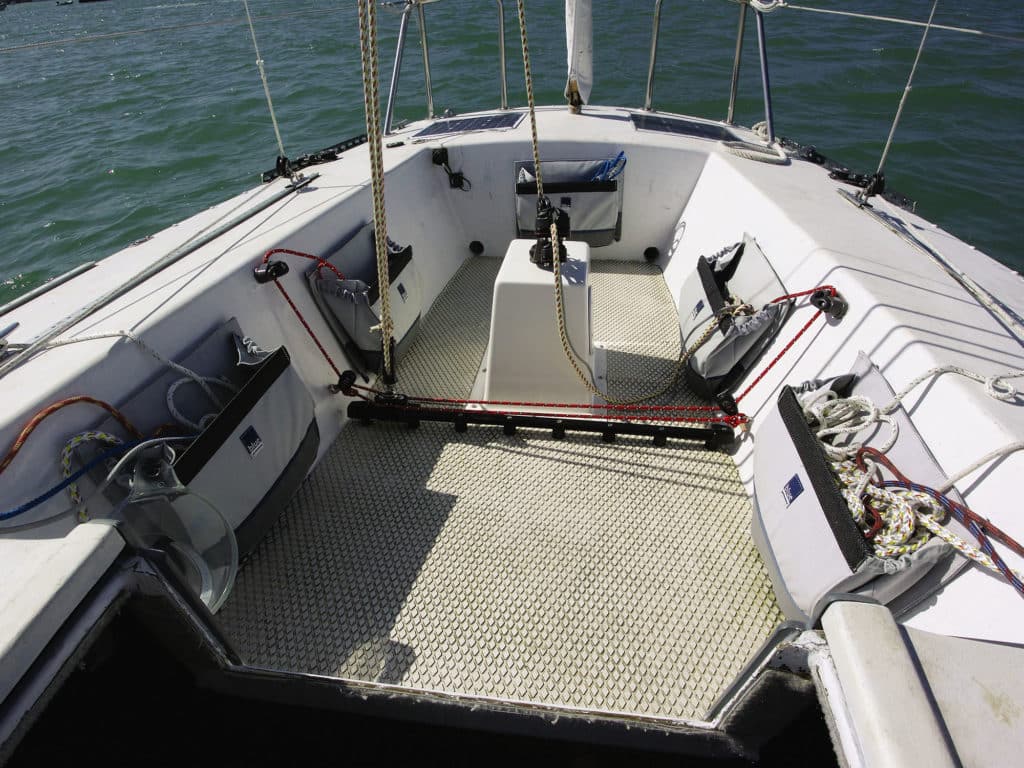
By far the greatest of these was reconfiguring the cockpit by removing a bridge that held the mainsheet traveler that was always a nuisance to step over—and at sea sometimes a hazard—and relocating the traveler to the cockpit floor.
The idea for this came from photos I saw online of other Moore 24s that have made the change, and I was greatly aided by Gilles Combrisson of GC Rigging in Point Richmond, California, whose firm made the pod on which the mainsheet block and cam cleat are mounted, provided me with the Harken track, risers, bolts and G-10 backing plate cut to size, and advised me of the Harken Duo-Cam that solves the problem of running the underdeck backstay control. Combrisson credits Scott Easam for first devising this configuration.
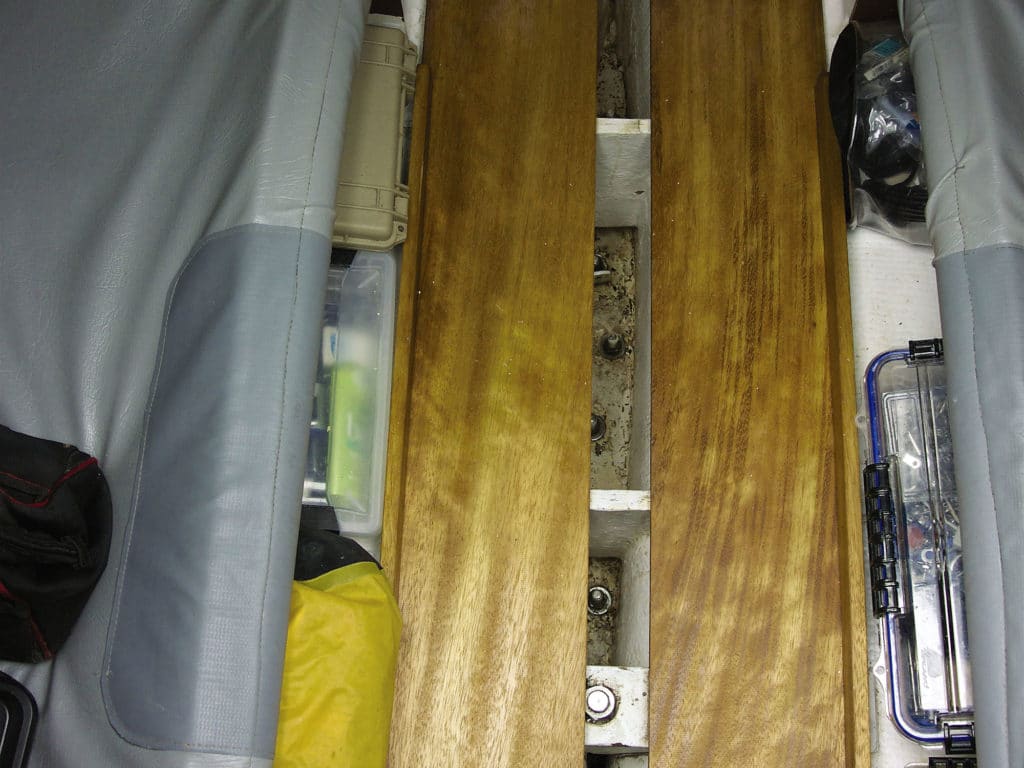
I did the work myself over a period of four days. It would have taken less, but this being New Zealand, I was often interrupted by rain. The result was dramatic. Living on and sailing Gannet was easier in many ways every day. This was one of the best modifications I made to the little boat.
During that stopover, I also took delivery of a new G1 gennaker from North Sails’ Opua loft. My old gennaker was fuller cut and good for broad reaching, but it slowed the boat as the wind moved forward. With the new sail, I had a vision of setting both gennakers wing and wing on an ocean passage and watching Gannet fly under clouds of sail.
Because the G1 didn’t furl well with my Facnor gennaker furler, I ordered a ProFurl Spinex top-down furler. I then cleared the deck by removing unused genoa tracks and cam cleats, also reducing the number of nuts on which I can hit my head inside the cabin by more than 40.
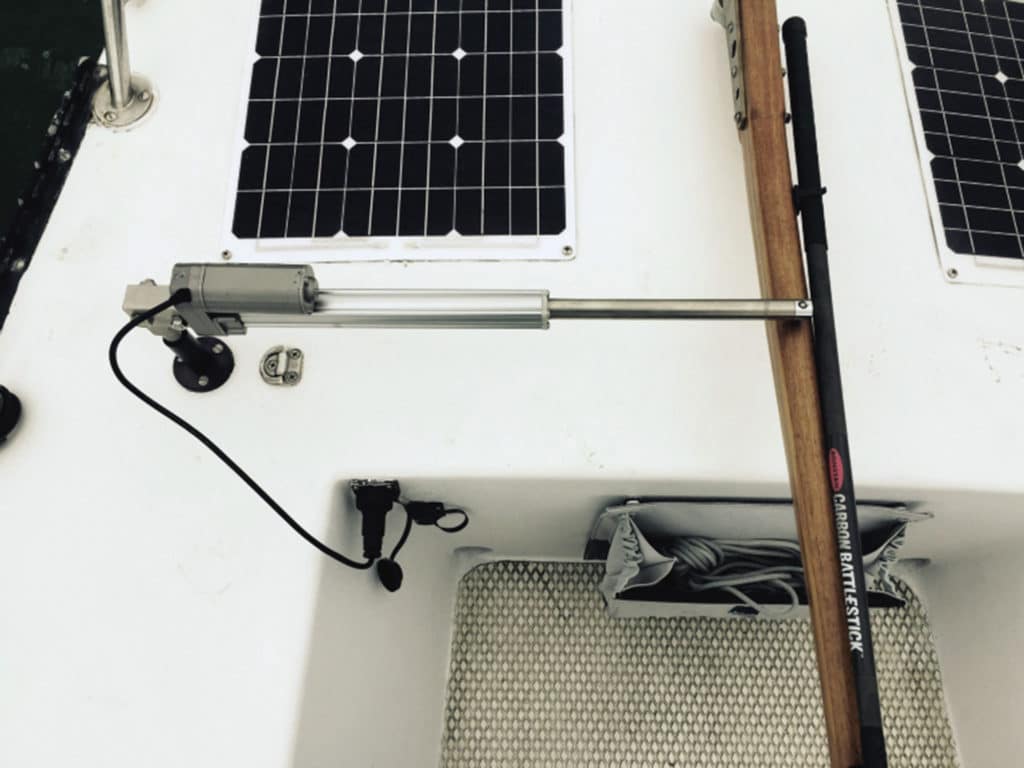
I added a TackTick wind system, which being solar powered and wireless was easy to install.
And I dramatically improved the sound of music with two Megaboom speakers, which when linked to play in stereo were by far the best waterproof Bluetooth speakers I’ve heard.
Though some of these upgrades were far from essential, all enhanced life aboard and sailing oceans. The Tasman, Coral and Arafura seas, and the Indian Ocean laid ahead.
Writer and sailor Webb Chiles completed his sixth solo circumnavigation in 2019 when he and Gannet, his Moore 24, arrived back in San Diego. You can follow his ongoing adventures on his website, inthepresentsea.com.








